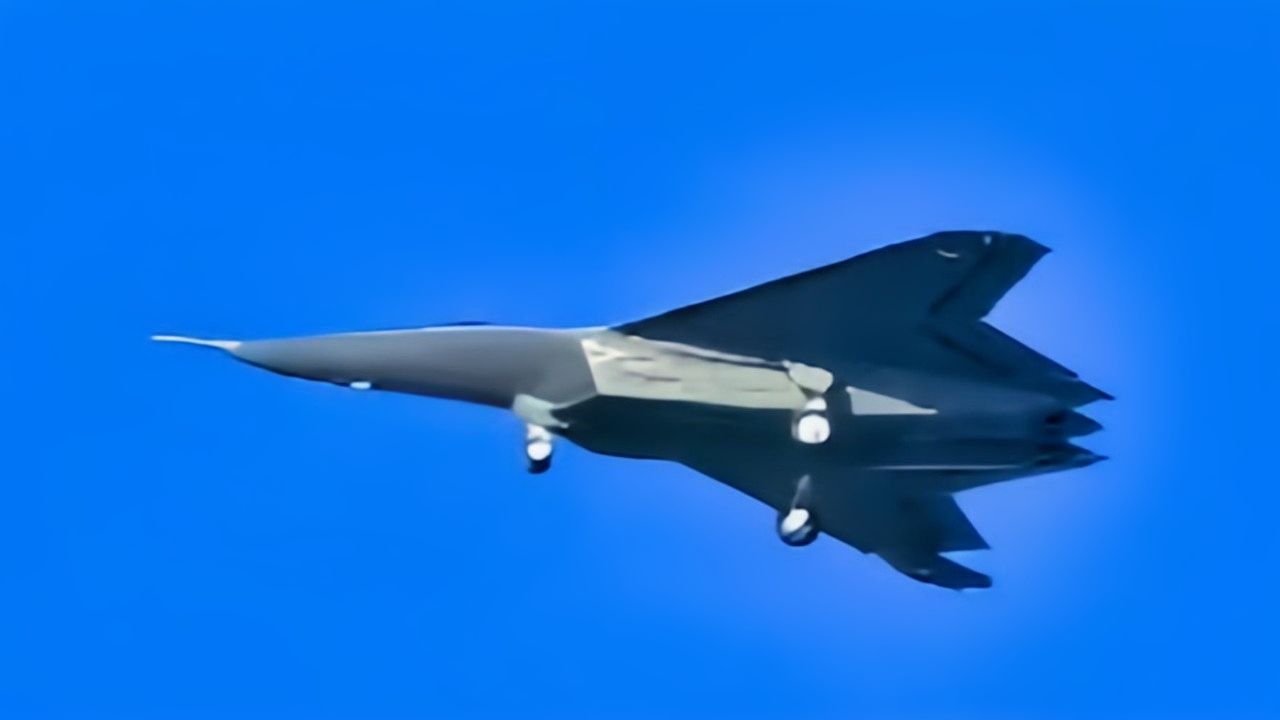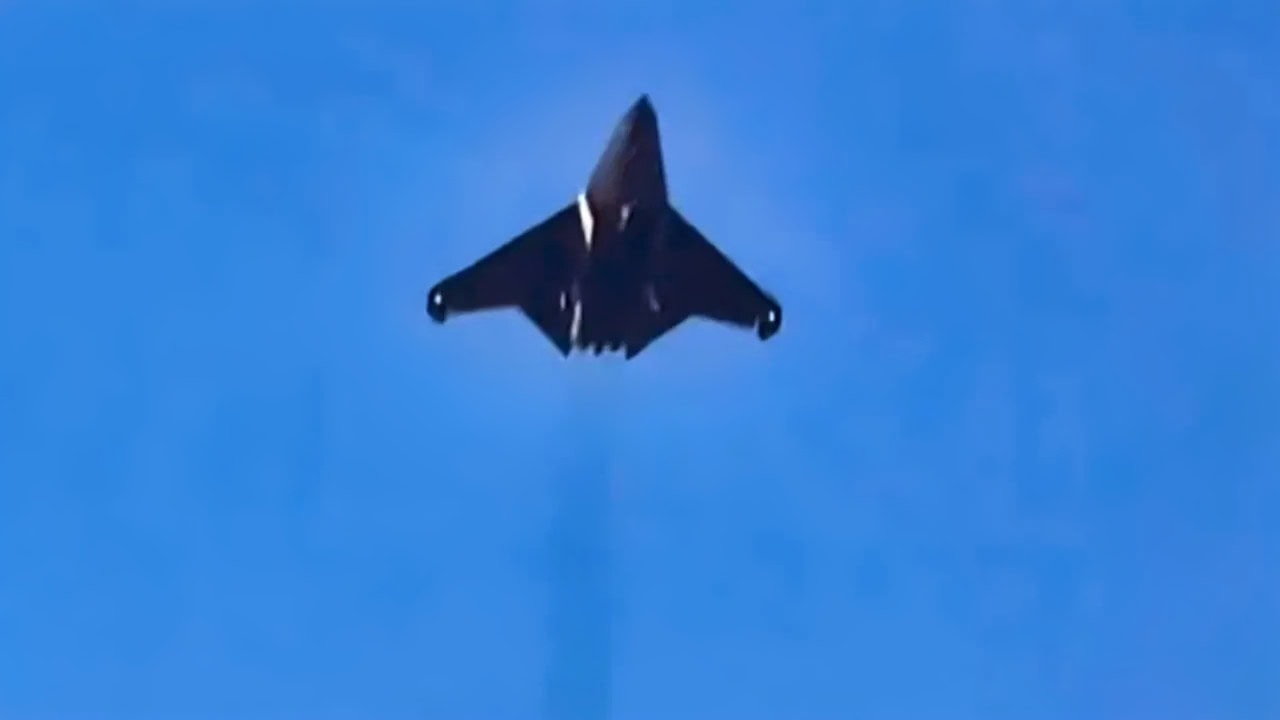Key Points: Analyzing new Chinese combat aircraft, like the purported J-36 and J-50/J-XDS, is akin to Cold War “Sovietology” due to Beijing’s tightly controlled information releases.
-Typically revealed in stages from blurry photos to clearer details, these aircraft present mysteries: the J-36 shows a possible side-by-side cockpit and unusual three-engine layout (likely temporary), hinting at a long-range strike role, while the J-50 features large, moveable wingtips.
-This deliberate opacity makes it hard for analysts to discern real programs from demonstrators or deception, meaning understanding China’s true aerospace advancements depends solely on what Beijing chooses to reveal.
China’s Mystery Warplanes: Decoding the Secrets of the J-36 and J-50
Forty years ago, a former professor gave an unvarnished view of what was then called “Sovietology.” This theory was the technique of trying to link together small, disparate bits of information to form some blurry outlines of what might be taking place behind the closed doors of the Kremlin in Moscow during the days of the USSR.
He was clearly skeptical of the efficacy of this now nearly extinct field of political science, calling it “an endeavor that exists somewhere on the scale between spookery and mythology.”
Today, his assessment might pass as an accurate description of what those of us trying to make sense of China’s unveiling of new combat aircraft programs to us in the West. As it was when we were trying to discern what the Brezhnev Politburo might be up to, analyzing these new fighter airplanes—the Chengdu J-36 and the Shenyang J-50/J-XDS—comes down to a simple proposition:
We only get to see what the Chinese military wants us to see—and only when they want us to see it—no sooner and nothing more.
A Play in Three Acts
These two new aircraft seem to follow this carefully scripted routine extremely well. New Chinese aircraft are generally revealed in three stages.
In Act One, blurry images of the new flying machine are posted on Chinese social media sites. The objects are far away and taken with a massive zoom lens; not much can be discerned except general shapes.
In Act Two, more explicit, clear, and closer-up photos are posted on the internet of a Chinese fighter being photographed in the middle of winter from behind tree limbs bereft of foliage due to the season. You can now see the aircraft clearly, but no official word on a designator or details is given.
In Act Three, the new fighter’s existence is recognized, and we begin to see videos and photos that reveal details of the aircraft’s wing roots, blivets, and appendages—even the design of exhaust nozzles. More clues emerge as to the aircraft’s potential mission and performance.

China J-36 Fighter. X Screenshot.
With these two new fighters in question, we are somewhere between Act Two and Act Three. We see the fighters in flight, and images and videos show slightly more of how they perform. In the case of the J-36, zooming in on some images shows what appears to be a cockpit that has not one but two Heads-Up Displays (HUD), which means it may have a side-by-side cockpit like the Russian Sukhoi Su-34.
Big Questions
We do not quite understand why these aircraft are built with such unconventional characteristics—some previously unseen on any other Chinese design.
One of the most curious is the J-36’s three-engine arrangement. Given the penalties in weight and fuel consumption that would have to be paid by having a third engine, there are good chances this is not the final version of this aircraft. The three-engine arrangement would significantly restrict the aircraft’s range and payload capacity.
One possibility is that the aircraft will eventually have just two, more higher-rated thrust engines, but that engine design is just not ready yet.
An air vehicle of this size could be used as a long-range attack platform designed to take out a strategic facility like the US base on Guam. It could also be a cruise missile or air-launched ballistic missile carrier that could launch on targets located at long distances.

J-50 Fighter from China. Image Credit: Creative Commons.
Another strange anomaly would be what seems to be the large, moveable wingtip sections of the J-50. In the absence of any vertical control surfaces, these could be the answer to the control authority required to guide that aircraft into a stable flight regime.
In the end, the sometimes opaque and sometimes completely closed nature of China’s aerospace sector makes it a guessing game at times as to which program is a real aircraft designed to be built in large numbers, which is a testbed or demonstrator and which are just rolled at the time of a photo satellite passing overhead or paraded in front of a bunch of tail-spotting aircraft fanatics in order to take photos to confuse us.
What remains is that numerous new Chinese programs are constantly in different stages of development. We may not know their true state tomorrow or next year, but we will know when they decide they want us to know.
About the Author:
Reuben F. Johnson is a survivor of the February 2022 Russian invasion of Ukraine and is an Expert on Foreign Military Affairs with the Fundacja im. Kazimierza Pułaskiego in Warsaw. He has been a consultant to the Pentagon, several NATO governments and the Australian government in the fields of defense technology and weapon systems design. Over the past 30 years he has resided in and reported from Russia, Ukraine, Poland, Brazil, the People’s Republic of China and Australia.

